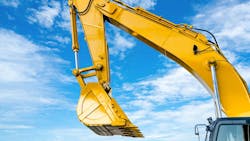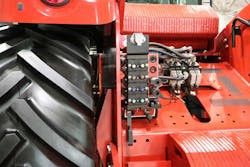How Modern Technology Impacts Hydraulic Systems
Advancements in technology impact almost every industry, and hydraulics are no exception. The application of hydraulics is only expanding with modern technology, and the way hydraulic systems are designed, controlled and monitored is evolving significantly.
Increasing Hydraulic System Control
One of the most significant changes in modern technology is the ability to precisely control hydraulic systems. Electronic controls and sensors enable hydraulics to operate more efficiently, resulting in improved performance and energy savings. In addition, electronic controls can monitor hydraulic systems and solenoid control valves adjust flow and pressure to optimize the system's performance based on specific application requirements. This is particularly beneficial in industrial applications where high precision and accuracy are necessary.
Moreover, using sensors and software transforms the way hydraulic systems are monitored and maintained. Sensors record and monitor system pressure and detect potential problems before they become significant, allowing for timely maintenance and repairs, reducing downtime and operational costs.
For example, software programs can now analyze the data collected from sensors and provide insights into system performance, leading to more efficient operations and cost savings. These advancements make it easier to maintain hydraulic systems, leading to more reliable and efficient operations.
Electrohydraulic Systems Bring New Benefits
Another significant impact of modern technology on hydraulics is the increased use of electrohydraulic systems. Electrohydraulic systems provide signal processing with hydraulic drives to deliver high power density and precise control, improving energy efficiency and controlling system accuracy.
These systems are common in mobile applications for providing high performance, efficiency and safety.
Transforming Hydraulics Through IoT and AI
Today’s technologies are combined into what is considered the Internet of Things (IoT). Devices using the IoT are integrated into hydraulic systems to enhance performance in real-time, signal maintenance requirements and energy consumption data. This information is used to optimize the hydraulic system's performance and reduce energy consumption, leading to immediate cost savings.
These types of advancements in technology make hydraulic systems more efficient, reliable and cost-effective. They transform the way hydraulic systems are designed, controlled and monitored. In the future, it is expected that modern technology will only continue to revolutionize hydraulic systems.
For example, there is a growing trend toward using artificial intelligence (AI) in hydraulic systems. AI can further optimize hydraulic system performance and more effectively predict maintenance requirements. This will help to reduce downtime and maintenance costs even more, further improving the efficiency and reliability of hydraulic systems.
Conclusion
Modern technology has significantly changed hydraulic applications. Electronic controls, sensors, software, electrohydraulic systems and IoT devices have transformed how hydraulic systems are designed, controlled and monitored.
These changes are expected to continue, and the future of hydraulics looks bright with the potential for even more significant technological advancements. The continued development of new technologies will likely lead to further improvements in hydraulic systems, making them even more efficient and reliable.
*This article was written and contributed by Brennan Industries.



